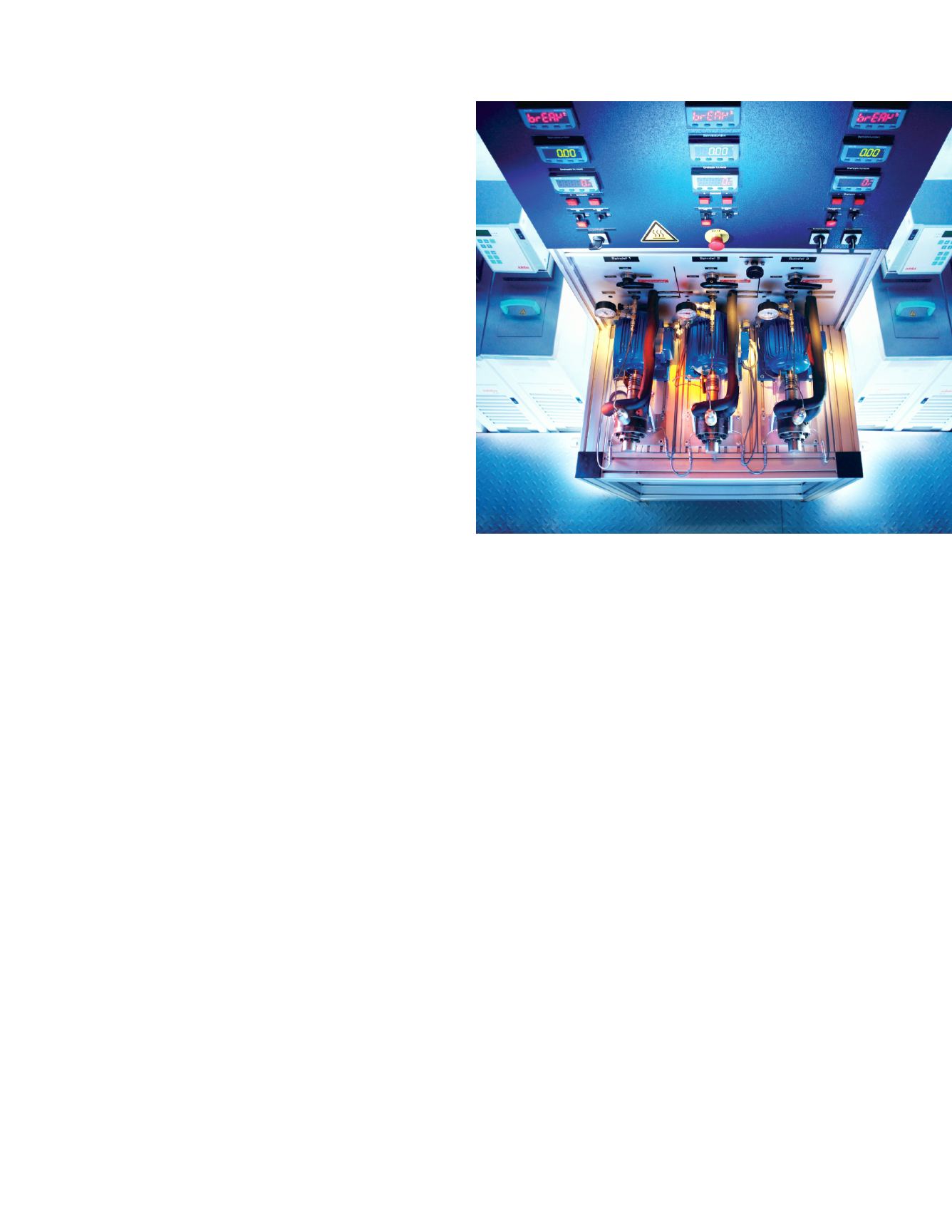
20
Fuels & Lubes International Quarter Three 2015
The regions are centered in Japan, the European Union
and the United States, said Lutz Lindemann, a member of
the executive board of Germany’s Fuchs Petrolub SE. More
and more, the regulations in each region are influencing
product development, he said. Lindemann touched on
some of the restrictions to product development at the
UNITI Mineral Oil Technology Conference in Stuttgart,
Germany in April.
One main challenge in the global lubricants market is
health and safety regulations. In 1992, when the Globally
Harmonised System (GHS) was conceived by the United
Nations, the environmental health and safety systemwas
not coherent across the globe, he said. Different areas
had their own ways of labelling toxic substances, such as:
“toxic hazard,” “harmful chemicals” and “poison.” The new
system, GHS, involves one common set of pictograms, one
of which is the skull and crossbones symbol.
BUILDING BLOCK APPROACH
As of 2014, GHS had been implemented in the U.S., parts
of South America and Asia, Australia, New Zealand and
Russia. Other regions are in progress. The implementation
takes a building block approach, he said, in which each
country can decide which sections, or blocks, it would like
to implement. The countries themselves are in charge of
the implementation. This approach “gives us an incoherent
landscape of the environmental health and safety
regulations,” he said.
International shipping can be complicated when the
labeling varies from starting point to destination. As
the GHS is being implemented in different levels and at
different paces across the globe, it is not much more
coherent than the way things were in the early 1990s, he
added.
REACH is another way that the development of new
products is being restricted, he said. REACH stands for
Registration, Evaluation, Authorisation and Restriction
of Chemicals, and was set in place in 2007 by the
European Union, the idea being to enhance innovation
and competitiveness in the European chemicals industry.
REACH has a “no data, no market” philosophy, meaning it is
a company’s responsibility to show the European Chemicals
Agency (ECHA) that any new substance can be safely used.
PARADIGM SHIFT
Lindemann described all this as a paradigm shift regarding
toxic chemicals. Any newmolecule, if there is limited data
on it, is considered highly toxic until a full toxicological
screening is conducted. Lindemann said this screening
takes extensive resources, and could cost USD one million
or more.
“This is an exercise which limits the available raw
material basket to existing molecules. To be innovative
takes more considerations to be sure they do not run into
toxicological problems, due to the regulations,” he said.
全球润滑油市场所面临的挑战之一是健康和安全法规。1992年
联合国提出“全球化学品统一分类和标签制度”(GHS)时,全球环
境健康和安全体系尚不统一,他说。不同的地区采用各自不同的有
毒物质标签制度,如“有毒危险”、“有害化学品”、“有毒物质”。新的
GHS制度采用统一的图标,即带有骷髅和交叉骨头的标志。
模块化方式
截止2014年,美国、部分南美国家和亚洲国家以及澳大利亚、新西
兰和俄罗斯已实施了GHS。其他地区尚处在实施的过程中。具体的
实施采用的是模块化方法,他说,即每个国家可以决定实施哪个章
节或模块。各国自己负责实施工作。这种方法“带来了参差不齐的环
境健康和安全法规,”他说。
如果出发地与目的地的标签制度不同的话,国际船运就变得非常
复杂。各地区对GHS的实施各不相同,情况与1990年代相比,并无
太大改观,他补充说。
对于新产品开发的另一个限制是REACH,他说。REACH代表“化
学品的注册、评估、授权和限制”,由欧盟于2007年制定,目的在
于强化欧洲化学行业的创新和竞争力。REACH采用“无数据,则无
市场”的原则,即由公司负责向欧洲化学品管理局(ECHA)证明任
何新的物质可以安全使用。
思维方式的变更
Lindemann称之为对有毒化学品的思维方式的变更。任何新的分
子,如果其数据有限,在完成完整的毒理学筛选之前,就被视为是
高度有毒的。Lindemann说这种筛选需要大量的资源,可能会花费
100万美元甚至更多。
“这种做法限制了在现有的分子中增加新的原材料。要创新,根
据现有的法规,需要考虑更多的因素以确保不会出现毒性问题,”
Photo courtesy of Fuchs Petrolub SE.


